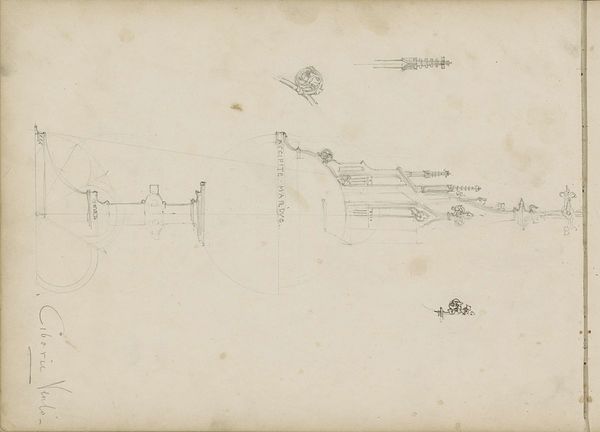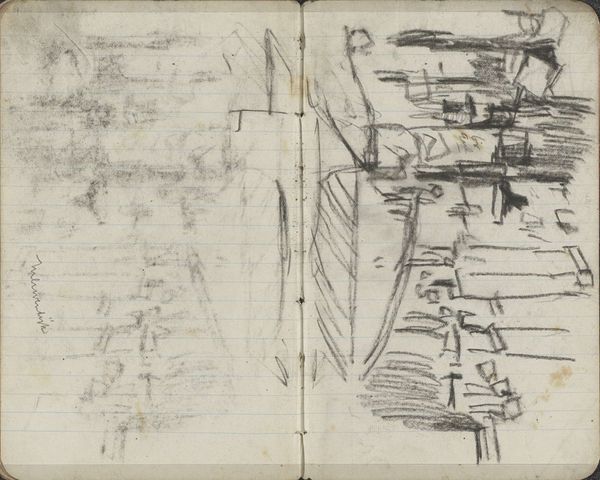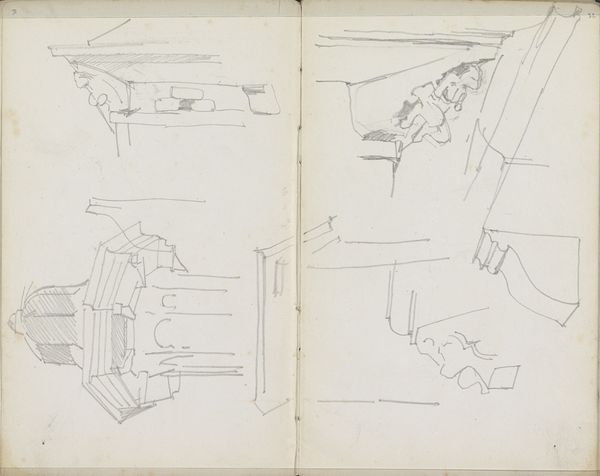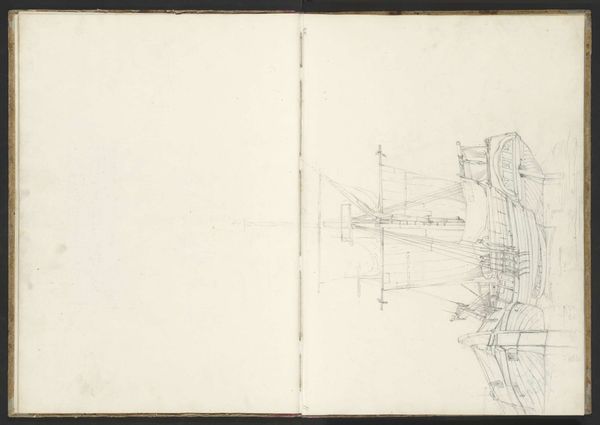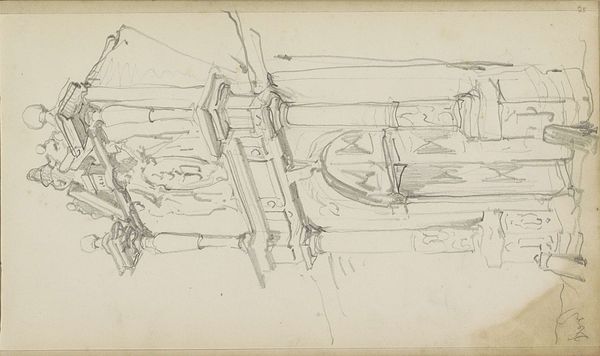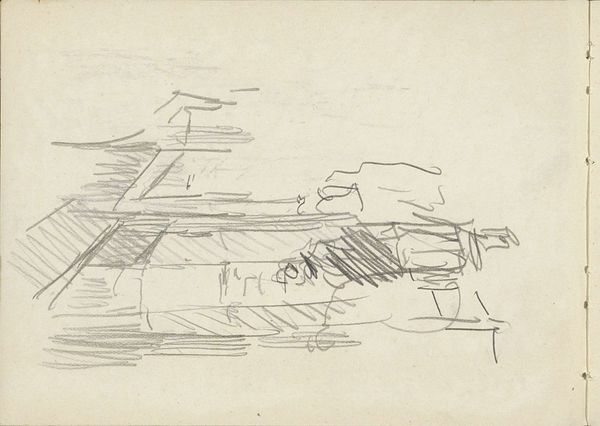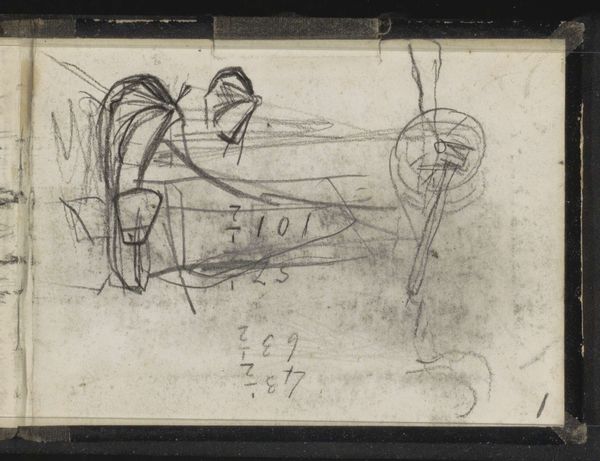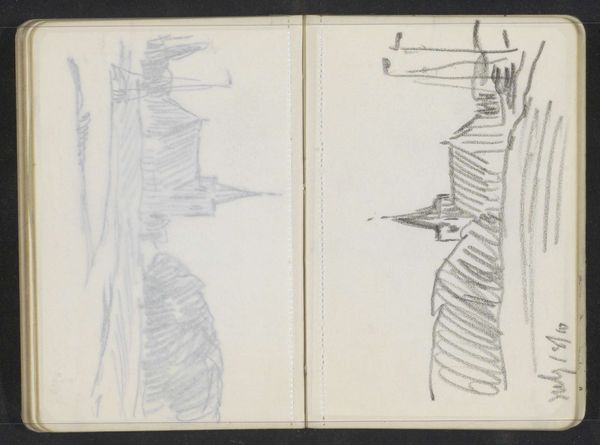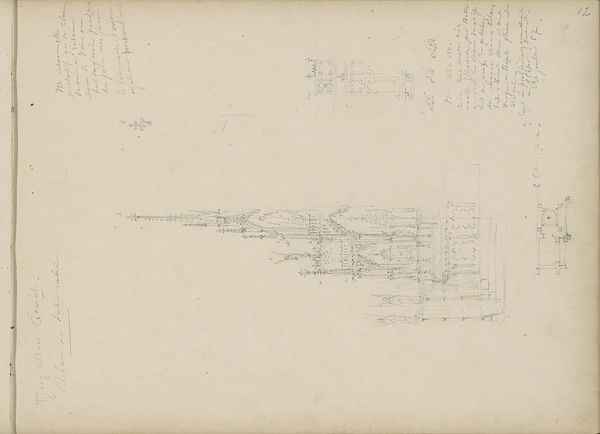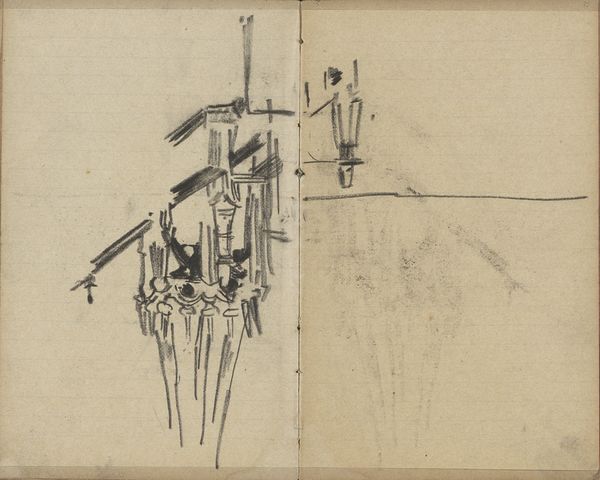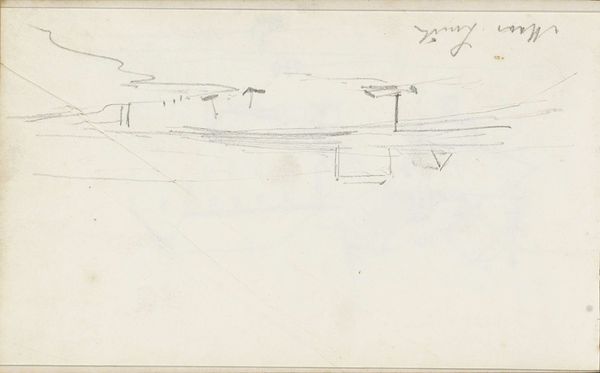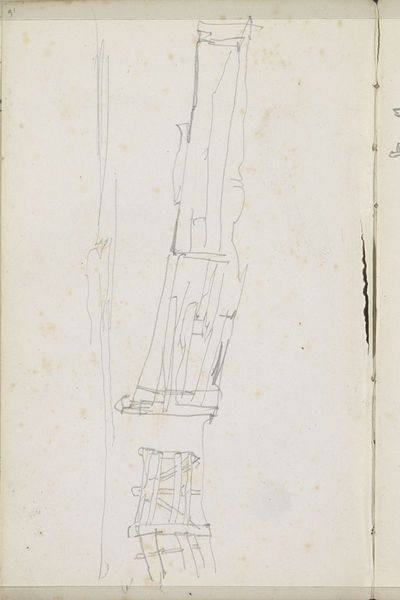
drawing, ink, pen
#
portrait
#
drawing
#
pen sketch
#
figuration
#
ink
#
pen
Dimensions: 447 mm (height) x 283 mm (width) (bladmål)
Curator: Here we have Lorenz Frølich's "To lurblæsere på søjle," or "Two Lur Blowers on a Column," created between 1820 and 1908. It’s an ink and pen drawing. Editor: This looks like a preparatory sketch, right? The stark contrast between the rough sketch on the left and the intricate rendering on the right page is pretty fascinating, considering this dichotomy, how can you interpret this artwork? Curator: I'm particularly interested in the act of its creation. The tools employed – pen and ink – are simple, almost rudimentary. What does that suggest about Frølich’s engagement with the process? Editor: It points towards a very direct, hands-on approach, where the physical act of drawing is prioritized. The sketch on the left seems so preliminary, almost functional. Was he perhaps sketching ideas or patterns he encountered in daily life or elsewhere? Curator: Exactly. Perhaps he saw them being built, perhaps the figures represent laborers and the means of their exploitation are reflected in the almost detached rendering of bodies. The labor inherent in the creation, both represented and real, becomes the central theme here. Think about the time frame. It’s right in the midst of early industrialisation, a time of tremendous change for artists and artisans. Editor: I hadn't considered that social aspect. So you're suggesting that Frølich isn't just representing lur blowers, but also hinting at the means and conditions under which such figurative works might exist? Curator: Precisely. How can we ignore that ink on paper represents economic power too, access to which wasn’t uniformly shared in Frølich’s era? The materials speak to more than just the final image; they represent the means of artistic production and perhaps, in turn, of societal production as well. Editor: I’m beginning to see this artwork in a totally different light. Looking closer at it now, the drawing represents the political economy in that time period, making the sketch as telling as the final version on the right side.
Comments
No comments
Be the first to comment and join the conversation on the ultimate creative platform.
